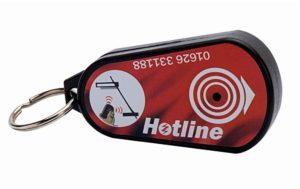Electric Fencing has been an essential tool for agricultural farmers for years. The purpose of course is to act has a psychological barrier - when the animal gets shocked they develop and instinct not to touch the fence again. Whether you're looking to keep animals contained or protected from the threat of predators, anyone who owns cattle, horses, pigs, sheep and poultry should know how to set up an electric fence correctly. So if you're relatively new to farming, updating your existing equipment or looking to refresh yourself on what to do, Waterman's has put together a quick buyers guide to setting up all the fencing equipment you need from Battery Energisers to Fence Testers.
How Do Electric Fences Work?
A current travels along one of several fence wires which are insulated from the ground. The circuit is closed when an animal touches the live fence wire and they receive an uncomfortable but innocuous electric shock. It is therefore important that no tall grass comes into contact with the wires as it reduces the fence's effectiveness at sustaining a consistent electrical flow along the wires.
What Do I Need?
Crucially an electric fence is made up of three key components:
An Energiser and Battery - This is the power unit that creates the electric shock on the fence by converting the battery or mains power into an electric pulse. Waterman's supply a number of different energisers for you to choose from such as the mains powered Hotline Red Kite Mains Powered Fencing Energiser and the battery operated Hotline HLB 3V Shrike Electric Fence Energiser.

Earth Stake - Earthing is important for your fence to complete the circuit and therefore allow power to flow through the animal, into the ground and then back to the electric fence energiser and create the shock. Drier, sandier soil will struggle to conduct as well for a good quality earthing system, so if you're having trouble, use multiple earth rods or choose a better location.
Fence Wire - Made from synthetic cord with stainless steel wire woven in, we supply reliable, durable and visible fence wire and rope options for small paddocks to large areas that you're looking to cover. The Hotline TC49-1 Turbocharge Tape includes 4 stainless steel conductors and also has full UV protection to prevent against sun damage. To set up the structure of your fence, you need fence posts, end tensioners and gate handles to attach to the conducting wire.

How Do I Know My Fence Is Working?
There are a few ways to test an electric fence is working without a tester but it either involves physically touching it which isn't pleasant, or holding a blade of grass to the wire - neither actually confirm that you've got a correct or consistent voltage. The Hotline P20B Beeper Pocket Sized Fence tester is a handy testing device you can keep in your pocket and test whether the wire is live quickly and easily. Alternatively, the Hotline Fault Finder is a great digital tester that gives an accurate reading of your fence's voltage and also provides you with an indication of where to find faults along the wires.
